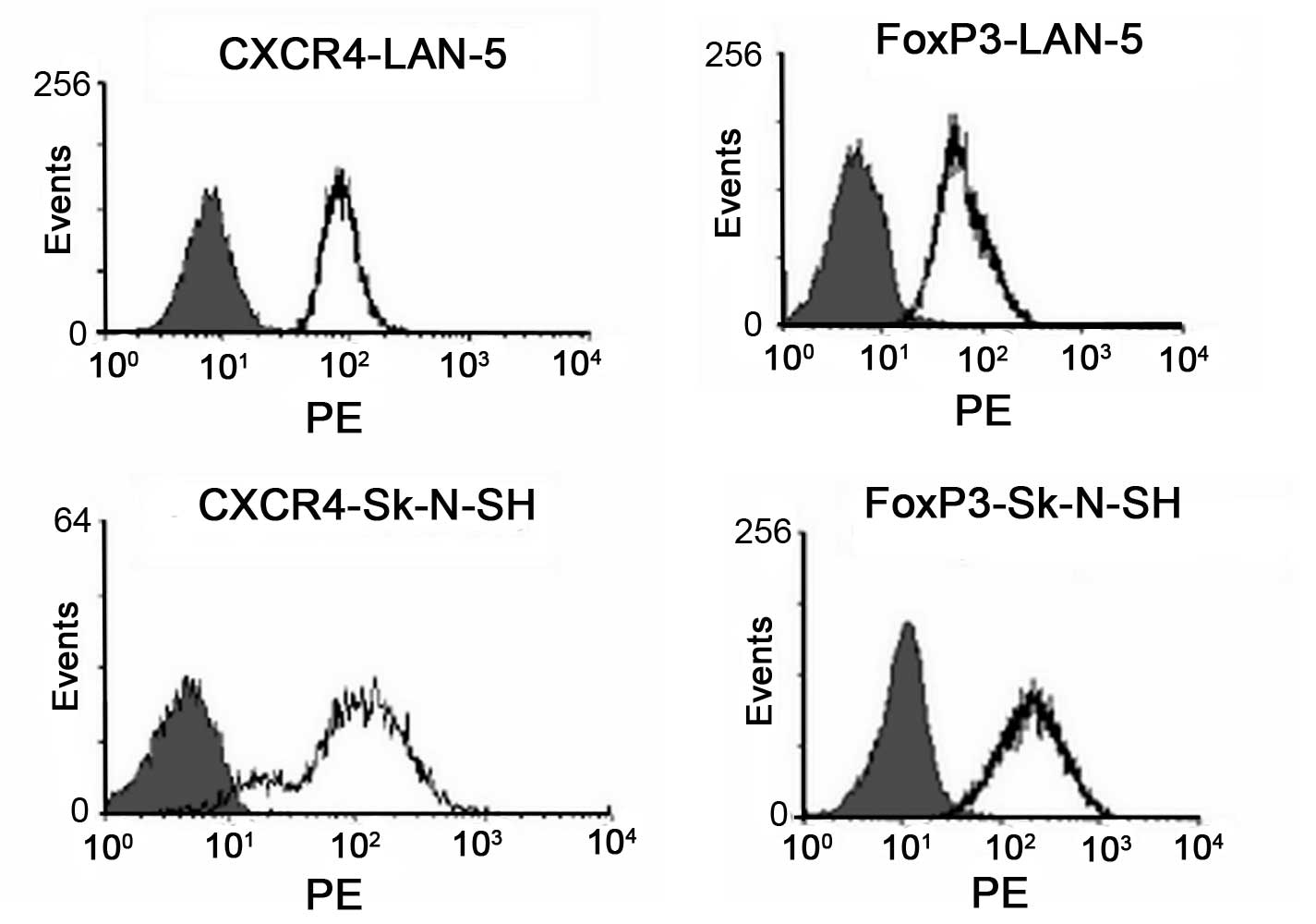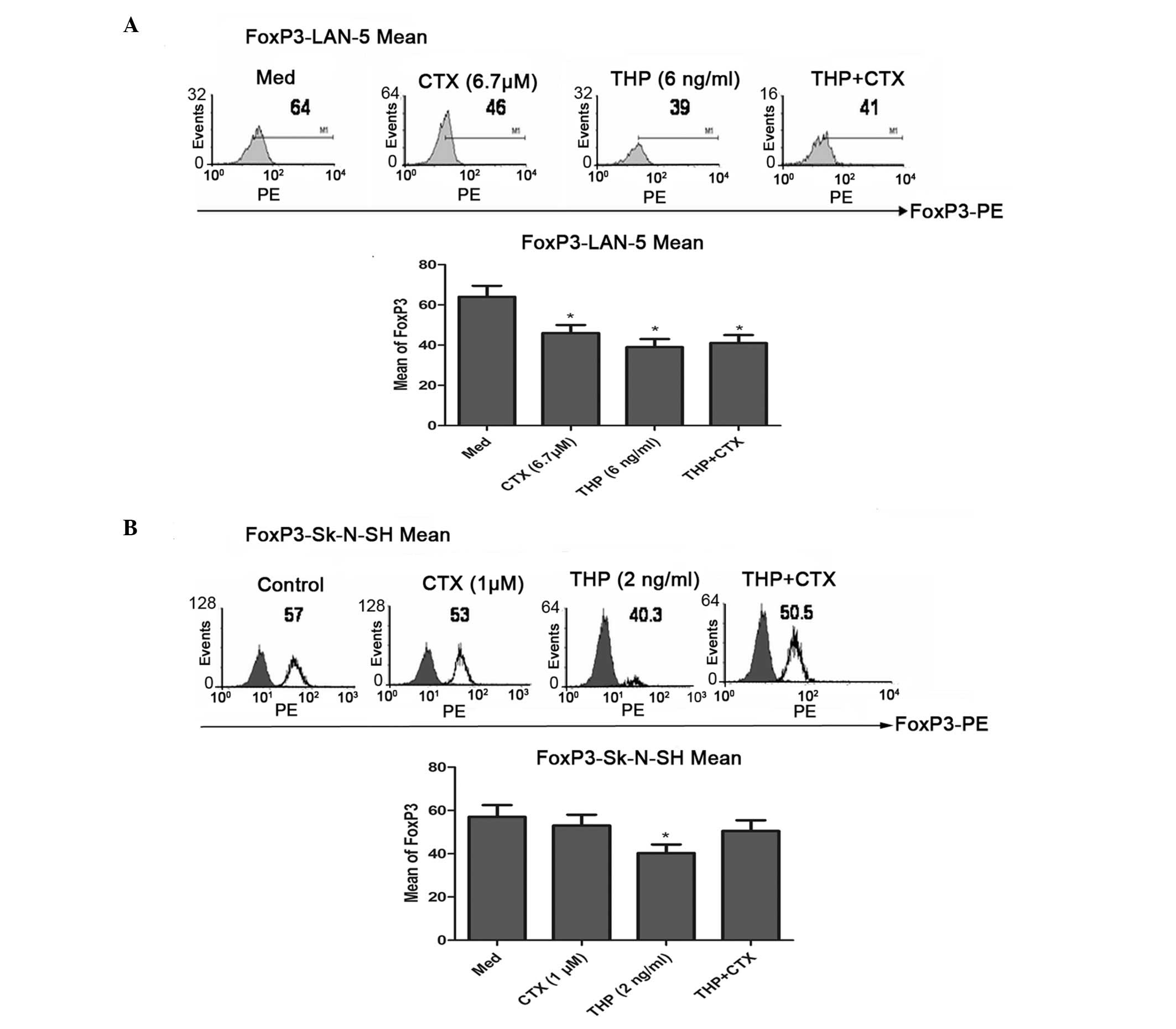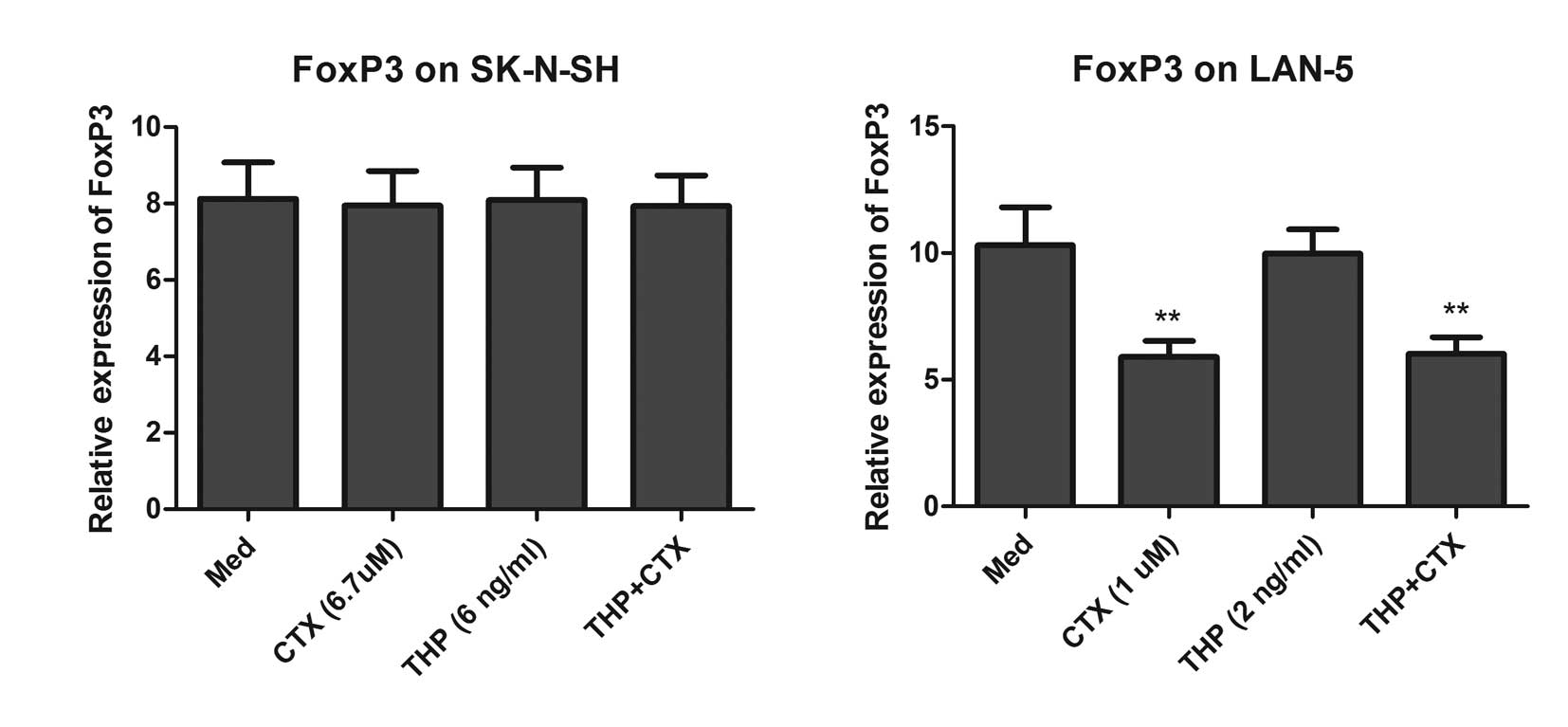|
1
|
Guerreiro R, Santos-Costa Q and
Azevedo-Pereira JM: The chemokines and their receptors:
characteristics and physiological functions. Acta Med Port.
24(Suppl 4): 967–976. 2011.(In Portugese).
|
|
2
|
Ito H: Chemokines in mesenchymal stem cell
therapy for bone repair: a novel concept of recruiting mesenchymal
stem cells and the possible cell sources. Mod Rheumatol.
21:113–121. 2011.PubMed/NCBI
|
|
3
|
Salazar N, Castellan M, Shirodkar SS and
Lokeshwar BL: Chemokines and chemokine receptors as promoters of
prostate cancer growth and progression. Crit Rev Eukaryot Gene
Expr. 23:77–91. 2013. View Article : Google Scholar : PubMed/NCBI
|
|
4
|
Singh R, Lillard JW Jr and Singh S:
Chemokines: key players in cancer progression and metastasis. Front
Biosci (Schol Ed). 3:1569–1582. 2011. View
Article : Google Scholar : PubMed/NCBI
|
|
5
|
Felix AS, Edwards R, Bowser R and Linkov
F: Chemokines and cancer progression: a qualitative review on the
role of stromal cell-derived factor 1-alpha and CXCR4 in
endometrial cancer. Cancer Microenviron. 3:49–56. 2010. View Article : Google Scholar : PubMed/NCBI
|
|
6
|
Wald O, Shapira OM and Izhar U:
CXCR4/CXCL12 axis in non small cell lung cancer (NSCLC) pathologic
roles and therapeutic potential. Theranostics. 3:26–33. 2013.
View Article : Google Scholar : PubMed/NCBI
|
|
7
|
Mo W, Chen J, Patel A, et al: CXCR4/CXCL12
mediate autocrine cell-cycle progression in NF1-associated
malignant peripheral nerve sheath tumors. Cell. 152:1077–1090.
2013. View Article : Google Scholar : PubMed/NCBI
|
|
8
|
Li B, Saouaf SJ, Samanta A, Shen Y,
Hancock WW and Greene MI: Biochemistry and therapeutic implications
of mechanisms involved in FOXP3 activity in immune suppression.
Curr Opin Immunol. 19:583–588. 2007. View Article : Google Scholar : PubMed/NCBI
|
|
9
|
Zeestraten EC, Van Hoesel AQ, Speetjens
FM, et al: FoxP3- and CD8-positive infiltrating immune cells
together determine clinical outcome in colorectal cancer. Cancer
Microenviron. 6:31–39. 2013. View Article : Google Scholar : PubMed/NCBI
|
|
10
|
Milne K, Köbel M, Kalloger SE, et al:
Systematic analysis of immune infiltrates in high-grade serous
ovarian cancer reveals CD20, FoxP3 and TIA-1 as positive prognostic
factors. PLoS One. 4:e64122009. View Article : Google Scholar : PubMed/NCBI
|
|
11
|
Mercer F and Unutmaz D: The biology of
FoxP3: a key player in immune suppression during infections,
autoimmune diseases and cancer. Adv Exp Med Biol. 665:47–59. 2009.
View Article : Google Scholar : PubMed/NCBI
|
|
12
|
Garaventa A, Parodi S, De Bernardi B, et
al: Outcome of children with neuroblastoma after progression or
relapse. A retrospective study of the Italian neuroblastoma
registry. Eur J Cancer. 45:2835–2842. 2009. View Article : Google Scholar : PubMed/NCBI
|
|
13
|
Cabioglu N, Sahin A, Doucet M, et al:
Chemokine receptor CXCR4 expression in breast cancer as a potential
predictive marker of isolated tumor cells in bone marrow. Clin Exp
Metastasis. 22:39–46. 2005. View Article : Google Scholar : PubMed/NCBI
|
|
14
|
Porvasnik S, Sakamoto N, Kusmartsev S, et
al: Effects of CXCR4 antagonist CTCE-9908 on prostate tumor growth.
Prostate. 69:1460–1469. 2009. View Article : Google Scholar : PubMed/NCBI
|
|
15
|
Tao H, Mimura Y, Aoe K, et al: Prognostic
potential of FOXP3 expression in non-small cell lung cancer cells
combined with tumor-infiltrating regulatory T cells. Lung Cancer.
75:95–101. 2012. View Article : Google Scholar : PubMed/NCBI
|
|
16
|
Droeser R, Zlobec I, Kilic E, et al:
Differential pattern and prognostic significance of
CD4+, FOXP3+ and IL-17+ tumor
infiltrating lymphocytes in ductal and lobular breast cancers. BMC
Cancer. 12:1342012.PubMed/NCBI
|
|
17
|
Li YG, He JH, Yu L, et al: microRNA-202
suppresses MYCN expression under the control of E2F1 in the
neuroblastoma cell line LAN-5. Mol Med Rep. 9:541–546.
2014.PubMed/NCBI
|
|
18
|
Chen YX, Chen XW, Li CG, Yue LJ, Mai HR
and Wen FQ: Effect of tumor gangliosides on tyrosine
phosphorylation of p125FAK in platelet adhesion to collagen. Oncol
Rep. 29:343–348. 2013.PubMed/NCBI
|
|
19
|
Li K, Dong K, Gao J, Yao W, Xiao X and
Zheng S: Neuroblastoma management in Chinese children. J Invest
Surg. 25:86–92. 2012. View Article : Google Scholar : PubMed/NCBI
|
|
20
|
Navalkele P, O’Dorisio MS, O’Dorisio TM,
Zamba GK and Lynch CF: Incidence, survival, and prevalence of
neuroendocrine tumors versus neuroblastoma in children and young
adults: nine standard SEER registries, 1975–2006. Pediatr Blood
Cancer. 56:50–57. 2011.PubMed/NCBI
|
|
21
|
Gains J, Mandeville H, Cork N, Brock P and
Gaze M: Ten challenges in the management of neuroblastoma. Future
Oncol. 8:839–858. 2012. View Article : Google Scholar : PubMed/NCBI
|
|
22
|
Øra I and Eggert A: Progress in treatment
and risk stratification of neuroblastoma: impact on future clinical
and basic research. Semin Cancer Biol. 21:217–228. 2011.PubMed/NCBI
|
|
23
|
Sharp SE, Gelfand MJ and Shulkin BL:
Pediatrics: diagnosis of neuroblastoma. Semin Nucl Med. 41:345–353.
2011. View Article : Google Scholar
|
|
24
|
Hesselgesser J, Liang M, Hoxie J, et al:
Identification and characterization of the CXCR4 chemokine receptor
in human T cell lines: ligand binding, biological activity, and
HIV-1 infectivity. J Immunol. 160:877–883. 1998.PubMed/NCBI
|
|
25
|
Zeelenberg IS, Ruuls-Van Stalle L and Roos
E: The chemokine receptor CXCR4 is required for outgrowth of colon
carcinoma micrometastases. Cancer Res. 63:3833–3839.
2003.PubMed/NCBI
|
|
26
|
Hiller DJ, Meschonat C, Kim R, Li BD and
Chu QD: Chemokine receptor CXCR4 level in primary tumors
independently predicts outcome for patients with locally advanced
breast cancer. Surgery. 150:459–465. 2011. View Article : Google Scholar : PubMed/NCBI
|
|
27
|
Jung SJ, Kim CI, Park CH, et al:
Correlation between chemokine receptor CXCR4 expression and
prognostic factors in patients with prostate cancer. Korean J Urol.
52:607–611. 2011. View Article : Google Scholar : PubMed/NCBI
|
|
28
|
Tarnowski M, Grymula K, Reca R, et al:
Regulation of expression of stromal-derived factor-1 receptors:
CXCR4 and CXCR7 in human rhabdomyosarcomas. Mol Cancer Res. 8:1–14.
2010. View Article : Google Scholar : PubMed/NCBI
|
|
29
|
Li H, Zhao H, Yu J, et al: Increased
prevalence of regulatory T cells in the lung cancer
microenvironment: a role of thymic stromal lymphopoietin. Cancer
Immunol Immunother. 60:1587–1596. 2011. View Article : Google Scholar : PubMed/NCBI
|
|
30
|
Ikemoto T, Yamaguchi T, Morine Y, et al:
Clinical roles of increased populations of
Foxp3+CD4+ T cells in peripheral blood from
advanced pancreatic cancer patients. Pancreas. 33:386–390.
2006.PubMed/NCBI
|
|
31
|
Lucas S, van Baren N, de Smet C and Coulie
PG: Demethylation of the FOXP3 gene in human melanoma cells
precludes the use of this epigenetic mark for quantification of
Tregs in unseparated melanoma samples. Int J Cancer. 130:1960–1966.
2012. View Article : Google Scholar : PubMed/NCBI
|
|
32
|
Zuo T, Liu R, Zhang H, et al: FOXP3 is a
novel transcriptional repressor for the breast cancer oncogene
SKP2. J Clin Invest. 117:3765–3773. 2007.PubMed/NCBI
|
|
33
|
Fu HY, Li C, Yang W, et al: FOXP3 and TLR4
protein expression are correlated in non-small cell lung cancer:
implications for tumor progression and escape. Acta Histochem.
115:151–157. 2013. View Article : Google Scholar : PubMed/NCBI
|
|
34
|
Merlo A, Tagliabue E, Mènard S and Balsari
A: Matured human monocyte-derived dendritic cells (MoDCs) induce
expansion of CD4+CD25+FOXP3+ T
cells lacking regulatory properties. Immunol Lett. 117:106–113.
2008. View Article : Google Scholar : PubMed/NCBI
|














